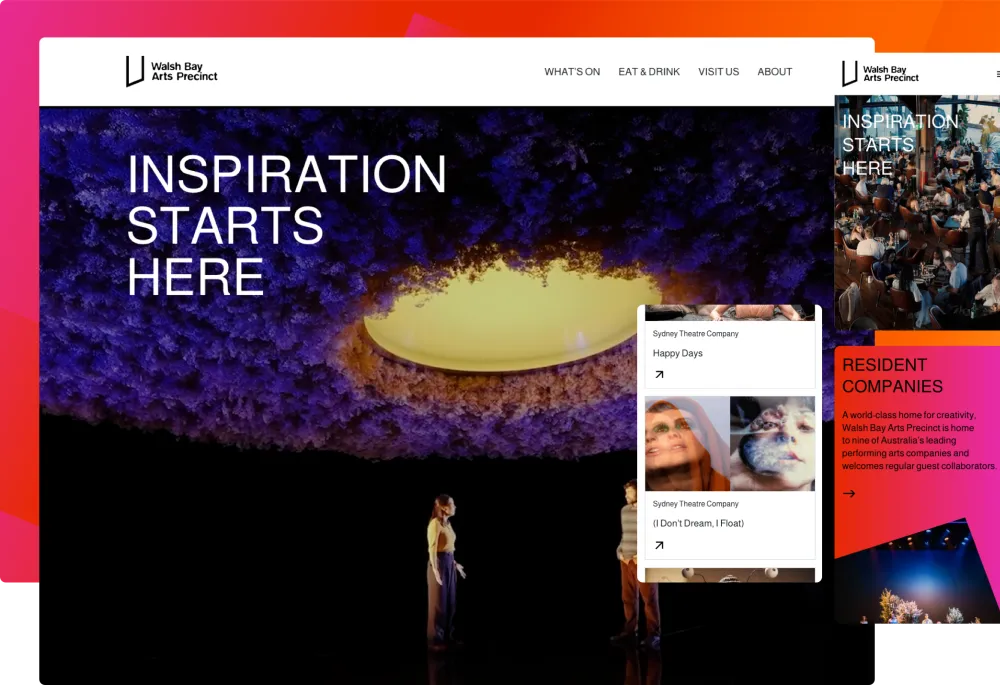Sector(s)
Overview
We partnered with a pharmaceutical company managing a portfolio of consumer and prescription products across several regional markets.
There was no existing site. Product content typically had to be forced into shared systems designed for broader portfolios. These setups grouped multiple products, teams and workflows into one place, which made updates slower, increased compliance risk and left no room for product-level control.
Medical and pharmaceutical portfolios are complex. Each product has its claims, approvals, disclaimers, and regulatory processes. Content must go through medical, legal, and regulatory (MLR) review. Every change must be versioned, timestamped, and audit-ready. As portfolios expand, shared systems become harder to maintain. Publishing slows. Review cycles overlap. Ownership becomes unclear.
Microsites give each product its own space with separate publishing flows, compliance checks and content governance.
To fix the publishing bottlenecks, the product site was rebuilt as a dedicated microsite with focused editorial workflows, scoped user roles, audience-specific routing, and reusable components. Teams now manage updates independently. Publishing is faster and no longer tied to other products.
The challenges
Medical products are governed by different rules. Some require a prescription. Others can be sold over the counter.
There was no dedicated product website. Information was either missing, scattered across broader platforms or forced into generic templates that weren’t suited to product-specific needs. It was difficult to present clear and accurate content.
Updates took more time than necessary, especially when different audiences such as patients and healthcare professionals required separate messaging. Without a proper structure, teams struggled with consistency, control and timely delivery.
Regulatory frameworks such as FDA 21 CFR Part 11, the EU Pharmacovigilance Directive, and the ABPI Code of Practice set clear expectations for how content is reviewed. Promotional content may reach the wrong audience. Outdated claims may remain live. Audit logs can become harder to interpret when tracking multiple products or regions through a single system.
Enterprise CMS platforms can technically support multiple products, but complexity increases quickly. As the number of products, markets, and teams grows, so does the friction.
Back to topThe approach
The team identified the need for dedicated product websites that could house product-specific content and operate independently from the broader portfolio. A dedicated microsite was planned to separate workflows by product and market, aligning more closely with how medical, legal, and regulatory (MLR) processes operate.

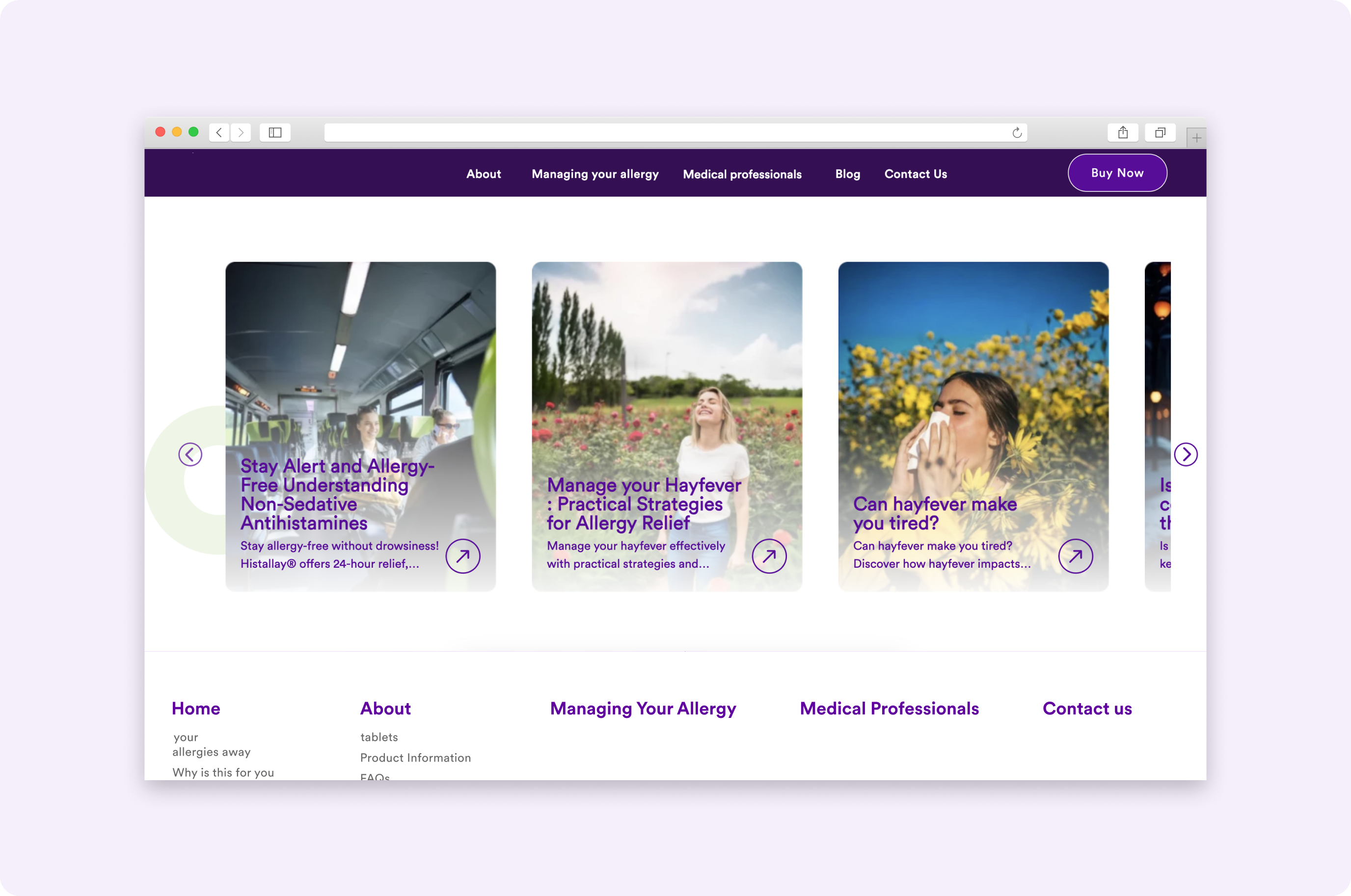
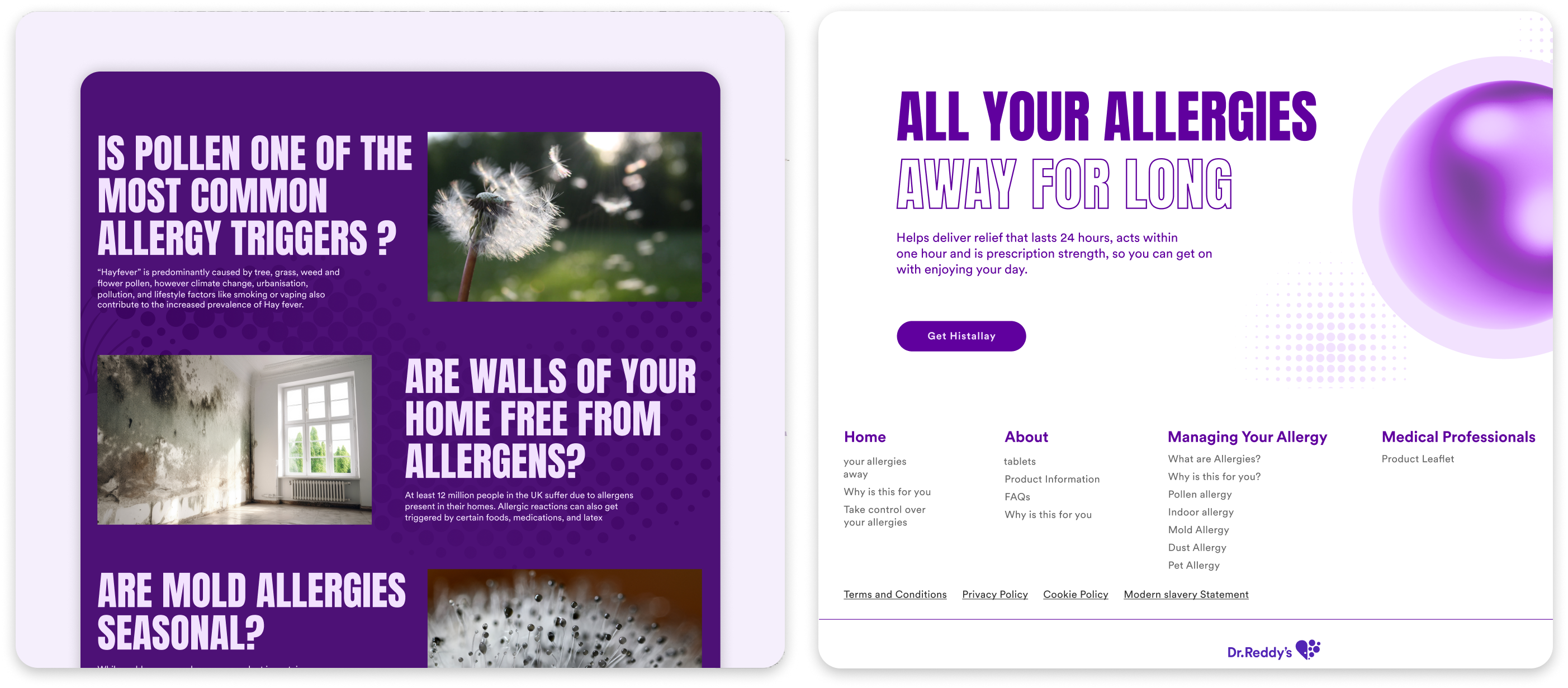
The structure was mapped to support market-specific approvals and audience-level controls. Routing logic was designed to keep patient and healthcare professional content separated.
To reduce duplication and manual effort, a component-based design system was planned from the outset. Approved elements could be reused across pages while maintaining consistency and control.
Editorial, legal, and regulatory teams were assigned scoped roles tied to specific responsibilities. This setup gave each team clarity on what they could review or manage, minimising overlap during the approval process.
The overall approach focused on aligning publishing structure with internal regulatory workflows while giving each product its own controlled space within a broader system.
Back to topThe solution
All product websites were brought onto a single platform. This cut down costs, made feature development more efficient and improved consistency across brands. A shared codebase and unified infrastructure meant less duplication, better governance and easier maintenance. Microsites were used to keep each product separate where it mattered, without losing the benefits of a centralised system.
1. Review cycles scoped to the product
Medical, legal, and regulatory teams work in focused review tracks. Microsites help prevent overlapping cycles by isolating reviews to a single product and limiting dependencies across teams.
2. Market- and audience-specific access
Content is routed by geography, language, and user type. Healthcare professional material remains gated. Country-specific versions can be managed independently.
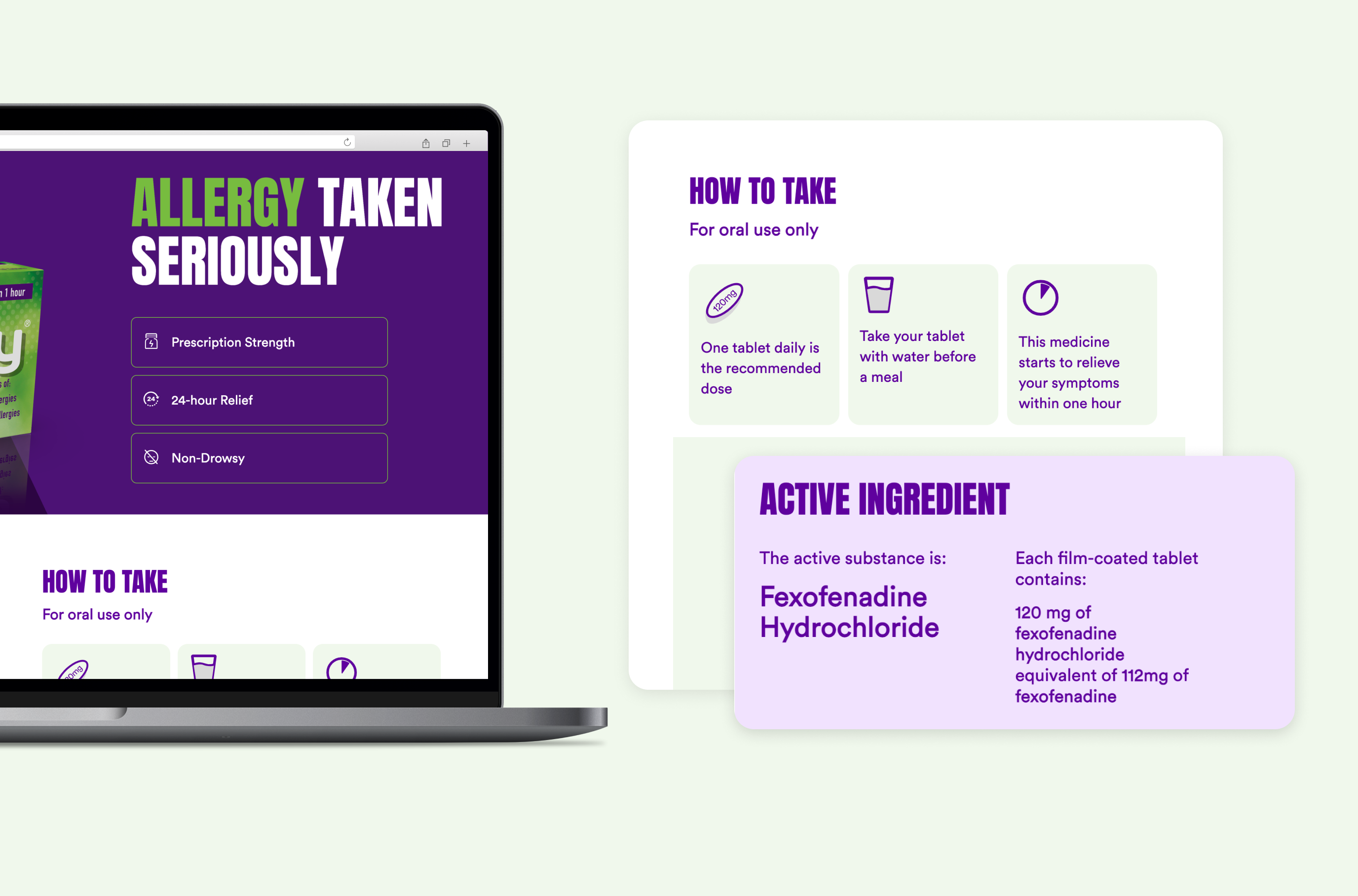

3. Version control and audit trails
Each product site maintains its record of changes, approvals, and published content. Regulatory teams can review history without filtering through unrelated material.
4. Scoped permissions
User roles are assigned at the product level. Each market team has access only to what it needs to manage, review, or approve. This reduces the risk of error and shortens review times.
Back to topThe outcome
The publishing system affects launch timing, regulatory response, review capacity, and cost. When product lines expand, the gaps in shared platforms become harder to manage. Teams wait for each other. Review cycles overlap. Visibility into what’s live and approved becomes harder to maintain.
From our experience building microsites for regulated content, assigning each product its own space allows it to move on its own track without waiting for others. Review and publishing cycles become more predictable across regions.
Wherever a product is launched, the structure stays consistent. The site meets local market and regulatory expectations from day one and can be updated without affecting unrelated teams.
Microsites work across product types and regulatory environments. They support country-specific claims, parallel campaign launches, product-level audit logs, pharmacovigilance (PV) updates, and versioned releases tied to local approvals.
They don’t operate in isolation. Microsites connect to existing systems such as:
- CRM tools for customer and HCP engagement
- Analytics and tag managers for monitoring usage
This gives product teams the control they need to publish accurately and on time, while central teams retain oversight where required.
Microsites also support local market ownership. Country teams manage their version of a product site. Rollouts can be staggered based on local approval timelines without blocking other launches.
Shared enterprise CMS platforms still have a place. They support asset libraries and central access. But for regulated publishing, microsites provide the structure needed to reduce delays, meet compliance requirements, and support cross-market delivery.

Structured content workflows
Drupal’s content moderation and role-based access matched how medical publishing works: editors draft, reviewers approve, and publishers release content. Audit trails and permissions kept everything compliant.
Product-level separation with microsites
Each product ran on its own Drupal microsite, with independent workflows and permissions. Teams could ship updates, campaigns, or safety notices without cross-team dependencies.
Component reuse with content governance
Drupal’s structured content model, paired with Storybook, allowed teams to reuse approved components across sites. That meant faster updates, less duplication, and consistent messaging.
Integration without disruption
Drupal was connected to asset libraries, analytics tools, and SEO systems through APIs and custom modules, so teams could keep using familiar tools while working from a central backend.
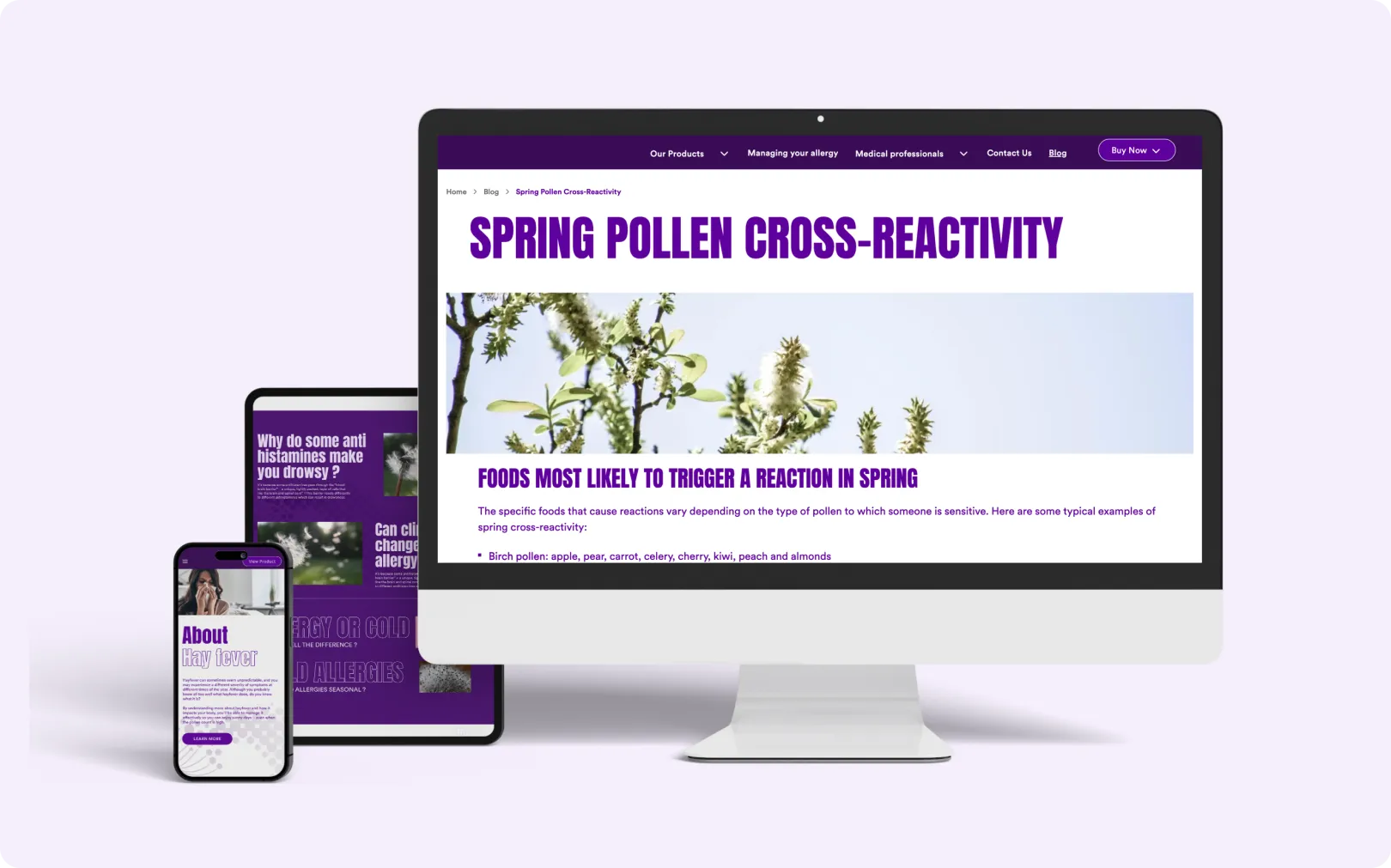
Technical Specifications
Drupal version:



